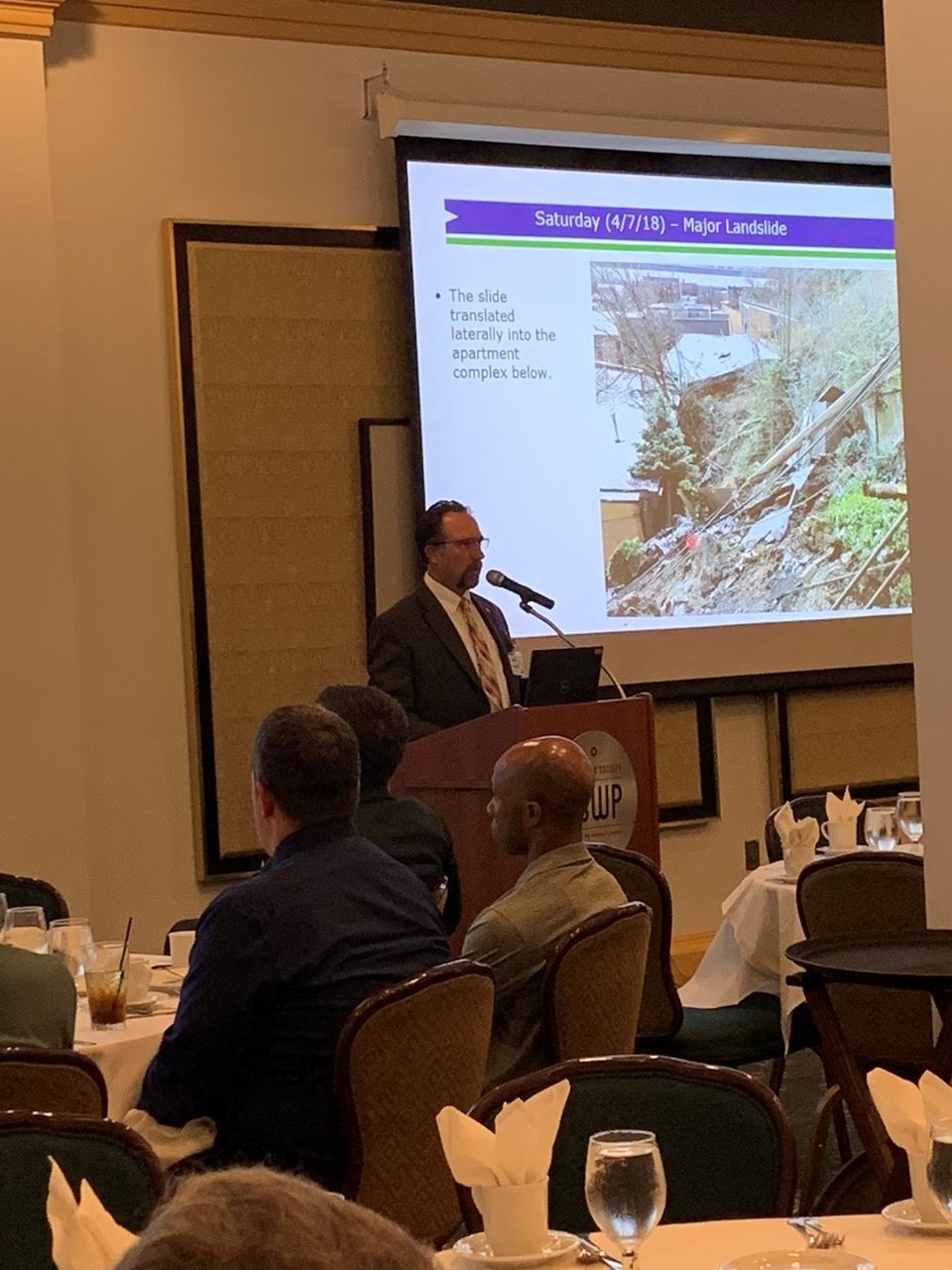By: American Society of Civil Engineers & Jonathan Shimko
On September 22-23, 2019, 107 Section and Branch Presidents, Region Governors and Society Directors from across the country and abroad attended the annual Presidents and Governors Forum (PGF) in Reston, VA at ASCE Headquarters. This Leader Training Committee sponsored event provided opportunities for attendees to learn about ASCE resources, network with other ASCE leaders, and develop skills that would benefit their Sections and Branches.
This year’s PGF was well attended by branch, section and regional leadership from across the country and even a few attendees from Region 10 (International Sections outside of North America). Pennsylvania is divided into four Sections: Pittsburgh, Central Pennsylvania, Lehigh Valley and Philadelphia.
 The photo above is of the attendees representing the sections and branches of Pennsylvania in front of ASCE Headquarters. Starting from the left, John Caperilla from Lehigh Valley; Jack Raudenbush from Central Pennsylvania; myself from Pittsburgh; Greg Kuklinski from Lehigh Valley; Kazi Hassan from Philadelphia; and Tim Carre from Central Pennsylvania.
The photo above is of the attendees representing the sections and branches of Pennsylvania in front of ASCE Headquarters. Starting from the left, John Caperilla from Lehigh Valley; Jack Raudenbush from Central Pennsylvania; myself from Pittsburgh; Greg Kuklinski from Lehigh Valley; Kazi Hassan from Philadelphia; and Tim Carre from Central Pennsylvania.
The program began on Sunday, with an icebreaker followed by several sessions including an “Introduction to your Presidency,” “How to Utilize your Governors,” “An Introduction to Region 10,” “Leadership in the Century of Disruption” by ASCE Distinguished Member Gerald Galloway, Ph.D., P.E., Hon.D.WRE, Dist.M.ASCE; “Legal Issues for Sections and Branches” and the “Philadelphia Section Mentoring Program.” President-Elect Kancheepuram Gunalan, Ph.D., P.E., D.GE, F.ASCE and Executive Director Tom Smith, CAE, ENV SP, F.ASCE shared their thoughts and experiences on Society activities. On Sunday evening, the attendees attended a networking social and dinner in Reston Town Center.
Monday continued with additional Best Practice sessions on Struggling Sections and Branches; Developing a State Infrastructure Report Card; Student Transition Strategies; Running a Successful Section/Branch; and Creating a Successful Website and the Effective Use of Social Media. Some of the attendees also attended breakout sessions on becoming a Region Governor and learning about ASCE Institutes. The program continued with a Roundtable Discussion sharing measurable goals for their Section/Branch and Resource Breakouts from Society Staff members, followed by a competitive game of JeopardASCE. Closing remarks were made by President-Elect Elect Jean-Louis Briaud, Ph.D., P.E., D.GE, Dist.M.ASCE.
After two solid days spent with ASCE, attendees left with new knowledge that will be useful in their upcoming year as a Section or Branch leader.
For more information about the PGF, please visit LTC’s website at: http://regions.asce.org/leader-training-committee/pgf and if you are interested in leadership opportunities within the Pittsburgh Section please email sam.shamsi@gmail.com.
